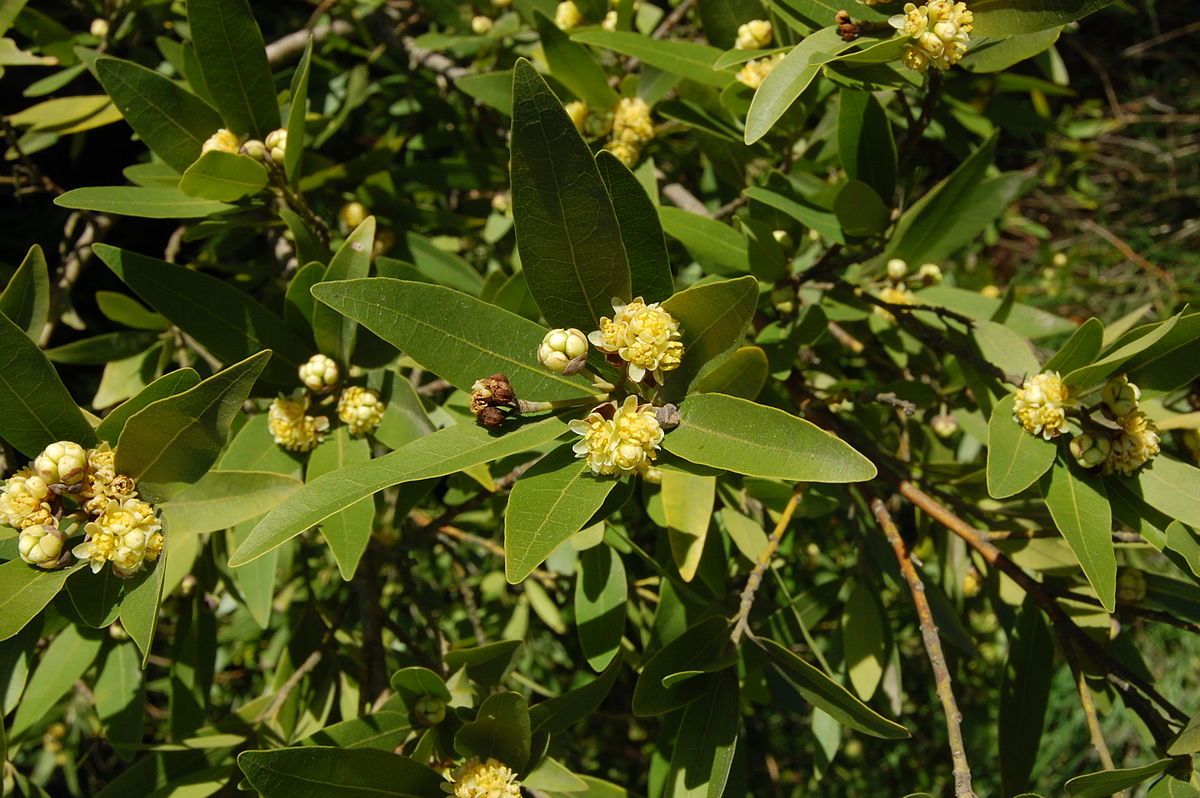California Laurel
(Umbellularia)

Description
Umbellularia californica is a large hardwood tree native to coastal forests of California, as well as to coastal forests extending into Oregon. It is endemic to the California Floristic Province. It is the sole species in the genus Umbellularia. The tree was formerly known as Oreodaphne californica. In Oregon, this tree is known as Oregon myrtle, while in California it is called California bay laurel, which may be shortened to California bay or California laurel. It has also been called pepperwood, spicebush, cinnamon bush, peppernut tree, headache tree, mountain laurel, and balm of heaven. The tree's pungent leaves have a similar flavor to bay leaves, though stronger, and it may be mistaken for bay laurel. The dry wood has a color range from blonde (like maple) to brown (like walnut). It is considered a world-class tonewood and is sought after by luthiers and woodworkers. The tree is a host of the pathogen that causes sudden oak death. In the north, it reaches its distributional limit through southwest Oregon to (infrequently) Newport, Lincoln County, Oregon, on the coast, extending from there south through California to San Diego County. It is also found in the western foothills of the Sierra Nevada mountains. It occurs at altitudes from sea level up to 1600 m. An isolated, more northern occurrence of the species can be found in Tacoma, Washington, around Snake Lake near the Tacoma Nature Center. There are also two recorded instances of trees growing in coastal British Columbia. It is an evergreen tree growing to 30 m tall with a trunk up to 80 cm thick. The largest recorded tree is in Mendocino County, California, and measured (as of 1997) 108 feet (33 m) in height and 119 feet (36 m) in spread. The leaves are entire and lance-shaped about 3-10 centimetres (1.2-3.9 in) long. They may substitute for the Mediterranean bay leaf in cooking. The fragrant leaves are smooth-edged and lance-shaped, 3-10 cm long and 1.5-3 cm broad, similar to the related bay laurel, though usually narrower, and without the crinkled margin of that species. Flowers open in late winter and early spring. The flowers are small, yellow or yellowish-green, produced in small umbels (hence the scientific name Umbellularia, "little umbel"). The fruit, also known as "California bay nut", is a round and green berry 2-2.5 cm long and 2 cm broad, lightly spotted with yellow, maturing purple. Under the thin, leathery skin, it consists of an oily, fleshy covering over a single hard, thin-shelled pit, and resembles a miniature avocado. Umbellularia is in fact closely related to the avocado's genus Persea, within the Lauraceae family. The fruit ripens around October-November in the native range.
Taxonomic tree:







